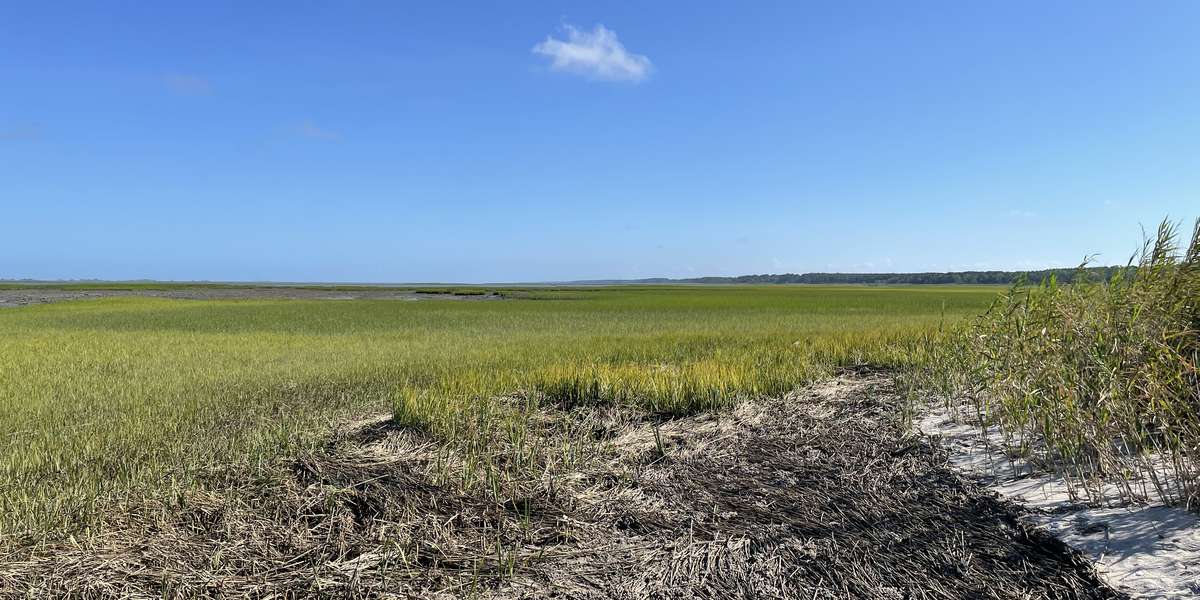2022
2023
2024
2025
June 28, 2021 at 5:20 PM

Horse Island Trail Marshes - Oyster, VA
Managed by Virginia Coast Reserve LTER
Since 2021
In Virginia, US
VCR102
This chronolog combines 169 photos from 145 contributors. Learn more
About this site
Can you see the two different types of plants in front of you? What about that large pile of dead plant stems? Each of these plants, dead or alive, contributes in different ways to keeping the salt marsh healthy and functioning. On the left you have the smooth cordgrass, Spartina alterniflora, the main plant species responsible for building marsh elevation high enough to escape sea-level rise. On the right, you have the invasive common reed, Phragmites australis, a plant that greatly contributes to carbon storage through its large roots and tall plant stems. In the middle you have a large pile of dead plant stems, (know as 'wrack' or 'sea oars'), which creates a safe home for worms, snails, crabs, and other marine life. Climate change can cause a shift in where each of these plants live, what time of year they turn green, and when they produce flowers. Your photo submission will help us answer how this salt marsh, its plants, and the landscape are changing over time. Thank you for contributing to our time-lapse in partnership with the Virginia Coast Reserve Long-Term Ecological Research Program , the University of Virginia's Coastal Research Center, and The Nature Conservancy's Virginia Coast Reserve Chapter.
About Virginia Coast Reserve LTER
How do slow, progressive environmental changes (such as sea level rise) interact with brief disturbances (including intense waves and storms) to shape our seaside landscape? We are trying to find out!
Since the mid 1980s, scientists from over half a dozen universities have worked together through the Virginia Coast Resever (VCR) Long Term Ecological Research (LTER) program to better understand barrier islands, coastal forests, salt marshes, oyster reefs, and seagrass meadows.
Our goal is to not only UNDERSTAND how coastal systems work, but also to PREDICT how they may function or change in the future due to a changing climate, sea level rise, and land usage. We also connect any of those changes to the ecological and economic services the coastal barrier island system provides to you (such as storm protection, flood control, fisheries habitat, tourism).
Beyond VA's coast, we are connected to a national network of LTER sites, studying and comparing environments all over world.
For nature-lovers
Explore chronologs
For organizations
Chronolog is a monitoring tool for parks, nature centers, wildlife organizations, schools, and museums worldwide. With over 100,000 contributors across 300 organizations, Chronolog is on a mission to engage communities with nature while recording important natural changes.
© Chronolog 2025 | Terms